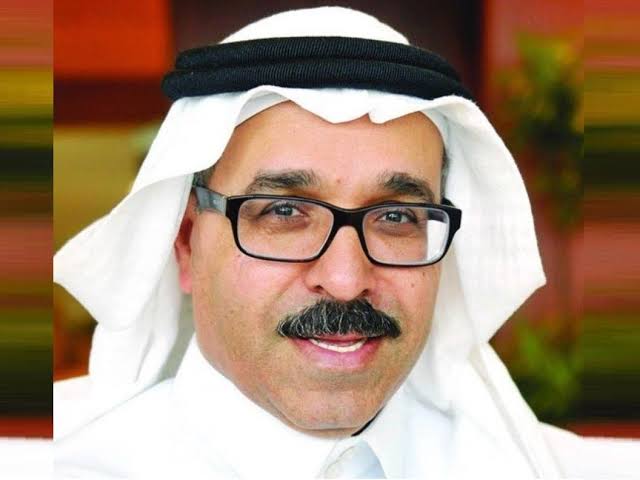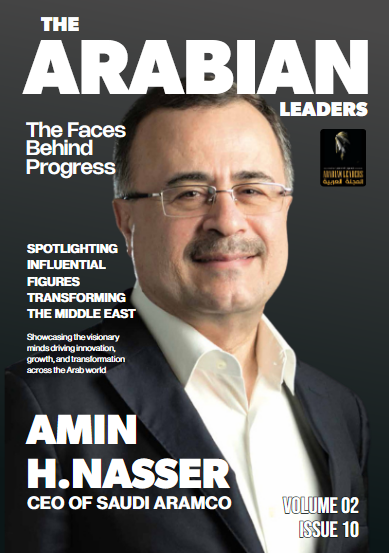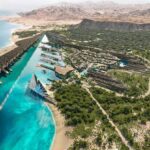In the vast architectural blueprint of Saudi Arabia’s national transformation, certain names emerge not through noise or notoriety, but through the gravity of their execution. Among those names stands Nadhmi Al-Nasr. For years, he was the man behind the curtain, the planner behind the plan, and the architect behind one of the world’s most daring experiments in civilization building—NEOM. Now, as the former CEO of the project, his legacy is not being debated; it is being constructed—every kilometer, every system, every silent steel frame echoing his mark.
Al-Nasr’s departure from NEOM’s leadership does not represent an end. It represents the solidification of a chapter that took the futuristic from conceptual to concrete. His tenure as CEO was defined not by performance reviews or public relations campaigns, but by masterplans, global alliances, and day-by-day delivery. What he set in motion continues to shape the Kingdom’s most forward-looking project. And what he leaves behind is not just vision—it is scaffolding, systems, and a clear trajectory.
ROOTED IN PRECISION, FORGED IN EXECUTION
Nadhmi Al-Nasr began his journey not as a figurehead, but as a systems thinker, engineer, and executor. A graduate of King Fahd University of Petroleum and Minerals, his career was molded inside one of the most disciplined environments in the world—Saudi Aramco. For more than three decades, Al-Nasr played critical roles in engineering, operations, and strategic planning within Aramco’s sprawling global empire.
He did not rise through personal branding. He rose through project milestones. From managing multi-billion-dollar industrial efforts to orchestrating large, multicultural teams, Al-Nasr became known as a man who got things done. He was not a theorist. He was a practitioner.
His leadership during the development of King Abdullah University of Science and Technology (KAUST) was another pivotal phase. Appointed Executive Vice President for Administration and Finance, and later Interim President, he oversaw not just the construction of an institution, but the delivery of an idea: that the Kingdom could compete on the global research stage. It was this project that proved he could manage not only infrastructure but the convergence of policy, talent, and international collaboration.
When the Kingdom needed someone to take the helm of NEOM—arguably the most ambitious civilizational project in the world—it turned to Al-Nasr. And he delivered.
NEOM: FROM THEORY TO TERRITORY
To understand Al-Nasr’s impact, one must first understand what NEOM is not. NEOM is not a real estate project. It is not a futuristic fantasy. It is a new model of society being built across 26,500 square kilometers in northwest Saudi Arabia. It aims to reshape not only the way cities look but how they function—socially, economically, environmentally, and digitally.
Under Al-Nasr’s tenure, NEOM moved from marketing decks to mapped-out districts. He was responsible for turning theoretical constructs like THE LINE, Oxagon, Trojena, and Sindalah into fully planned, financed, and phased programs. THE LINE, in particular, captured global headlines—a 170-kilometer linear city without streets, cars, or emissions. But it was Al-Nasr’s task to move it from vision to viability.
Each of these regions within NEOM demanded more than imagination. They demanded governance frameworks, investment strategies, stakeholder engagement, and world-class project management. Al-Nasr navigated these challenges with methodical intensity.
He treated NEOM not as a project but as a country in the making—requiring legal structures, economic incentives, security plans, and sustainable utilities. Every conversation he led, whether with international investors or internal regulators, stemmed from a single principle: NEOM is not a destination. It is a future-ready civilization.
ALIGNING WITH VISION 2030: A NATIONAL STRATEGIST
As Saudi Arabia pushes toward its Vision 2030 objectives, NEOM stands as one of its flagship vehicles. Its purpose is multidimensional: economic diversification, global positioning, technological leapfrogging, and sustainable living. Al-Nasr’s role in aligning NEOM with the broader national strategy was both tactical and philosophical.
He did not view Vision 2030 as a slogan to echo, but as a set of deliverables. His internal strategies were rooted in KPIs that reflected the Kingdom’s core ambitions: increasing non-oil GDP, creating high-value jobs, attracting international talent, and setting global benchmarks for green infrastructure.
He approached NEOM not as a planner, but as a national custodian—ensuring that its timeline, budget, and operational framework never diverged from the Kingdom’s strategic north star.
Under his leadership, NEOM did not simply remain a dream. It became a benchmark, not only for the Gulf but for the world.
A SYSTEMS THINKER IN AN ERA OF SOUND BITES
What separates Al-Nasr from many leaders in the urban planning world is his deep-rooted belief in systems over symbols. While some focus on high-profile launches and aesthetic marvels, Al-Nasr was working behind the scenes to develop water reuse strategies, smart grids, cross-border logistics mechanisms, and AI-integrated governance platforms.
He understood that the city of the future would not be judged by its skyline—but by its systems. Can it power itself sustainably? Can it govern itself transparently? Can it educate its youth innovatively? Can it adapt to climate volatility?
These were not academic questions for him. They were executive mandates.
He brought in global experts, set up world-class advisory councils, and introduced institutional design principles that ensured NEOM could evolve dynamically over the next 50 years. His focus was never just the first resident—it was the fiftieth generation.
EMBEDDING SUSTAINABILITY INTO THE CORE
Al-Nasr’s most visible commitment during his NEOM leadership was to sustainability—not as a checkbox but as a doctrine. He did not just speak of carbon neutrality—he embedded it into every procurement specification, design manual, and performance metric.
He championed 100% renewable energy infrastructure from day one. From green hydrogen plants to circular economy models, he made sure that every component of NEOM had an environmental accountability layer.
For him, sustainability was not about aesthetics. It was about endurance. He believed that any modern civilization that could not coexist with its environment was inherently flawed—and ensured NEOM would become the opposite: a global exemplar of planetary stewardship.
HANDLING CRITICISM, MAINTAINING COURSE
NEOM has not been without its critics. Its scope, ambition, and cost have all invited skepticism. But throughout, Al-Nasr remained unmoved. He understood that criticism is the price of innovation. He welcomed questions—but insisted on data.
His leadership style was rooted in preparedness. Every report he signed, every interview he granted, and every international forum he attended was built around a singular commitment: facts over flair.
He did not deflect scrutiny. He absorbed it, analyzed it, and recalibrated where needed. But he never diluted the vision.
Internally, he was known for driving his teams hard but fairly. Externally, he earned respect for his calm precision—a man more interested in delivery than applause.
PEOPLE FIRST: THE HUMAN INFRASTRUCTURE
While NEOM’s skyline and systems dominated headlines, Al-Nasr’s personal passion remained its people. He believed that a city’s success is measured not by its buildings but by its builders.
He initiated programs that prioritized human capital—internships for young Saudis, global recruitment pipelines, joint research initiatives with global universities, and leadership development for women and youth.
To him, NEOM’s greatest renewable resource was talent. And he ensured it was developed, retained, and rewarded.
He didn’t want to simply hire the best. He wanted to build them—from within.
A DIPLOMAT FOR THE FUTURE
Behind closed doors, Al-Nasr was also one of the Kingdom’s most effective diplomatic assets. His ability to represent NEOM in global investment forums, negotiate international partnerships, and translate Saudi ambition into global collaboration set him apart.
He did not use rhetoric. He used results. Whether speaking to sovereign wealth funds, Fortune 500 CEOs, or heads of state, Al-Nasr was always equipped with the blueprint, the roadmap, and the numbers.
He treated diplomacy not as theater, but as strategy.
A LEGACY NOT LEFT, BUT LAUNCHED
As Nadhmi Al-Nasr steps away from the CEO role at NEOM, he does so not in retreat, but in transition. What he has built is not a personal monument—but a national megastructure. His work is not ending. It is expanding—through teams he built, structures he designed, and systems he set into motion.
His legacy is not in one building. It is in the foundation of a new world being built in the Kingdom’s northwest.
While others may inherit the position, it is Al-Nasr who will be remembered as the one who turned ambition into anatomy.
CONCLUSION: THE QUIET ENGINEER OF A CIVILIZATIONAL TURN
Nadhmi Al-Nasr does not need to remain in the public eye to remain relevant. His imprint is already fused into the geography of the Kingdom’s future. Through tireless execution, unwavering vision, and methodical strategy, he turned the world’s boldest idea into Saudi Arabia’s most concrete transformation.








